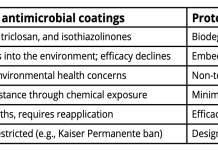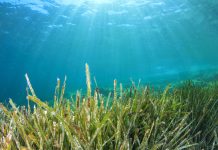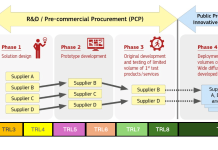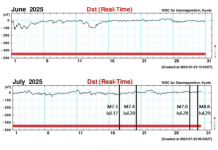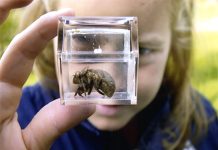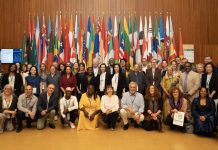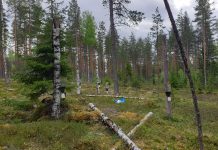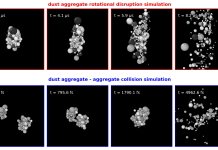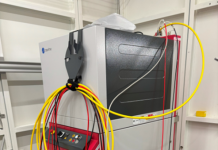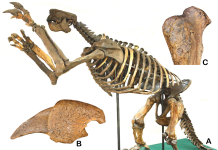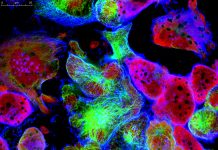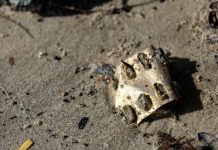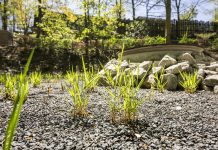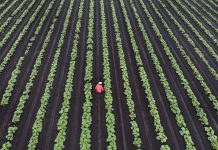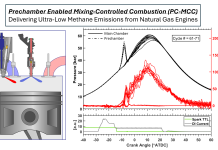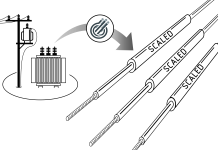Open Access Government produces compelling and informative news, publications, eBooks, and academic research articles for the public and private sector looking at health, diseases & conditions, workplace, research & innovation, digital transformation, government policy, environment, agriculture, energy, transport and more.
Home 2025
Archives
EPIC-X: Excelling deep tech through place-based innovation and connected ecosystems for women-led startups
EPIC-X envisions a European effort that unites diverse stakeholders to create an inclusive and equitable deep tech ecosystem, empowering women-led startups, fostering cross-border collaboration, and dismantling systemic barriers to innovation across Europe.
ProteCoat™: Non-toxic antimicrobial coating for safer hospitals and public spaces
ProteCoat™ is a non-toxic antimicrobial coating technology developed by Reactive Surfaces aimed at reducing healthcare-associated infections (HAIs) in hospitals and public spaces.
Navigating the sea of uncertainty around Marine Carbon Dioxide Removal (MCDR)
Prof. Christopher Pearce and Dr Willem van Dorp discuss the need for science-based governance approaches when evaluating the potential benefits, impacts and effectiveness of emerging marine carbon dioxide removal techniques.
How innovation procurement can boost European water resilience
As Europe faces rising water crises, PCP WISE brings innovation procurement to the forefront to develop smarter, scalable tools for real-time water management and climate resilience.
Could the summer 2025 earthquake awakening be provoked by magnetic storms?
Dimitar Ouzounov (1,2) and Galina Khachikyan (3) expertly walk us through the strong earthquakes awakening in July and August of 2025, which geomagnetic storms could have provoked in June 2025.
Why aren’t schools teaching data science?
Nancy Butler Songer highlights the importance of data literacy skills for pre-university students. The Life Right Here and Everywhere Project aims to equip youth with essential data science skills, fostering confidence and addressing challenges in integrating data into lessons.
The prepared code: A values-driven approach to pandemic preparedness
Corinna Pannofino, Research Communications Manager at Trilateral Research, introduces a new framework for ethical research that was launched to prepare for the next pandemic, restoring public trust and ensuring scientific integrity.
Priodiversity LIFE: Protecting biodiversity through restoration
Matti Koivula from the Natural Resources Institute Finland (Luke) discusses the advancement of forest restoration techniques in Northern European forests and explains how the Priodiversity LIFE project will enhance this knowledge base, address biodiversity loss, and contribute to EU restoration goals.
Tiny dust particles in space are the seeds of life
Dr Stefan Reissl and Prof Dr Ralf S. Klessen introduce tiny dust particles in space, the seeds of life, in this intriguing field of astronomy research.
Bridging big science and industry quality control for laser manufacturing processes
Discover how researchers are making the PETRA III Swedish Materials Science beamline’s X-rays accessible for tracking the evolution of material properties during laser processing.
A gentle giant: Thomas Jefferson’s ground sloth
Professor Loren E. Babcock and Dr H. Gregory McDonald discuss the historical significance of palaeontology, focusing on key figures’ contributions to the field and their studies of the ground sloth, Megalonyx.
Life PeatCarbon Project: The role of peatlands for climate change mitigation
Dr. biol. Māra Pakalne from the University of Latvia provides insights into the LIFE PeatCarbon project by exploring the significance of peatlands in mitigating climate change.
Lighting the way to cancer surgery
By decoding the subtle timing of light, scientists could give surgeons sharper vision in the operating room – and patients a brighter outlook beyond it.
Pharmaceuticals and personal care products in wastewaters
Despite progress in wastewater treatment, PPCPs like medications and personal care products continue to enter ecosystems, threatening aquatic life. Since 2020, the Bow River Ecosystem Health Assessment project in Alberta, Canada, has been evaluating the impact of treated wastewater on the Bow River.
LIFE4ZOO: Sustainable water circulation in zoos
LIFE4ZOO is a project dedicated to sustainable water circulation for the future of zoos, as explained by experts Tomáš Lederer, Petr Kvapil and Paola Sepúlveda-Ruiz.
Navigating the consumer-food interface: A regulatory perspective on plant protein in Canada
Christopher P.F. Marinangeli, PhD, RD, is the Director of the Centre for Regulatory Research and Innovation at Protein Industries Canada. He discusses the consumer-food interface from a regulatory perspective on plant protein in Canada.
Reducing methane emissions from natural gas reciprocating engines: The silent contributor to global climate...
While natural gas is a cleaner-burning alternative to coal and diesel, its use comes with a significant downside: methane emissions. Adam Dempsey from Marquette University highlights prechamber-enabled mixing-controlled combustion as a promising technology for reducing methane slip from natural gas engines.
Scaled: Substation in a cable for adaptable low-cost electrical distribution
Modern power electronics meets medium voltage cables to create a high-density inline power conversion system for the grid of tomorrow.
The next chapter in regenerative medicine for osteoarthritis: From real-world evidence to regulatory shifts
Osteoarthritis (OA) remains one of the leading causes of disability worldwide, yet the therapeutic landscape is evolving faster than ever.
Grape extracts to prevent the use of antibiotics in farmed animals
Learn about the NeoGiANT project, which focuses on the antimicrobial and antioxidant properties of grape extracts to prevent the need for antibiotics in farmed animals.


